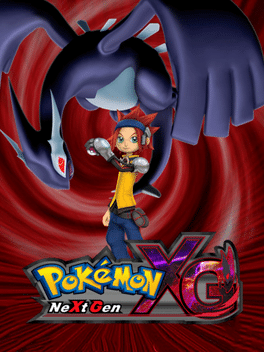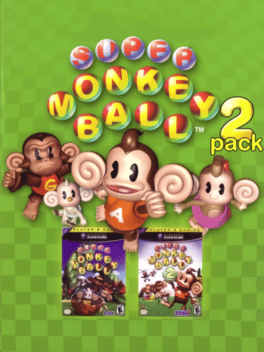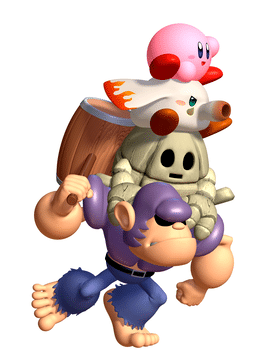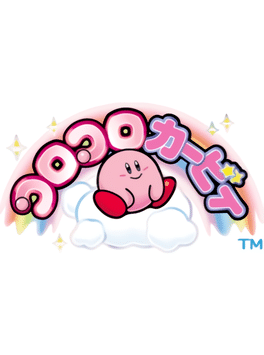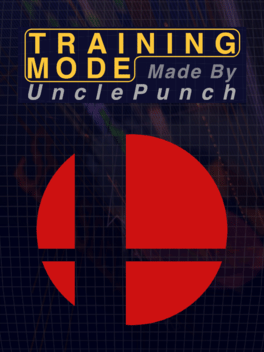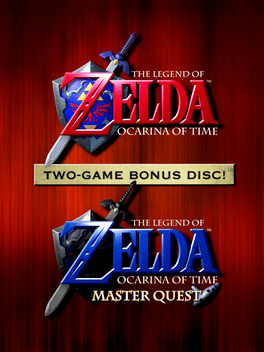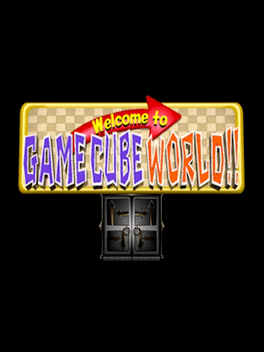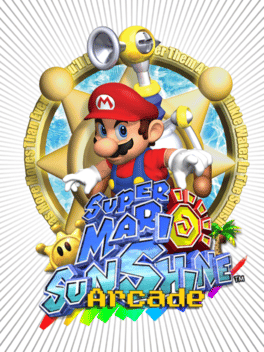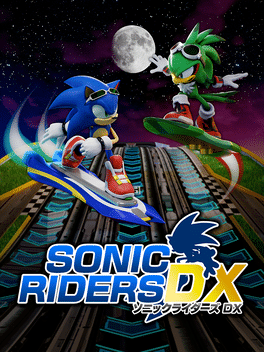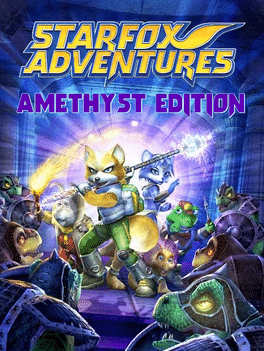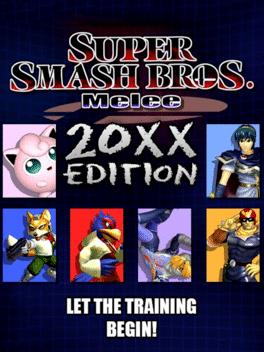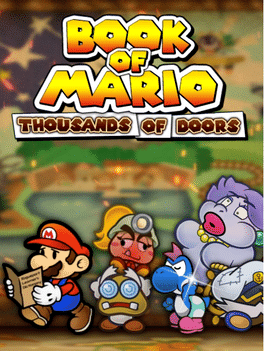Most Popular Nintendo Gamecube Games - Page 16
-
Pokémon XG: NeXt Gen
2016
Pokémon XG: NeXt Gen
2016
Pokémon XG: NeXt Gen is a rom hack of Pokémon XD: Gale of Darkness. Notable features include: - Physical/Special Split - Gen VII type matchup chart including fairy type - New set of shadow pokemon and other obtainable pokemon - Over 100 Shadow Pokemon - Over 50 Shadow Moves - Over 75 Wild Pokemon - Moves and abilities from later generations - Mostly Gen VII Game Mechanics - More challenging opponents -
Bokujou Monogatari: Shiawase no Uta
2005
Bokujō Monogatari: Shiawase no Uta is the fourteenth title of Bokujō Monogatari series to be released for Gamecube. It was never released outside of Japan. The game was updated eight months later with the release of Bokujō Monogatari: Shiawase no Uta for Wārudo. Natsume localized the updated version of the game under the name Harvest Moon: Magical Melody. The game contains several differences: Jamie is not marriageable. Smaller capacity for the shelf and the fridge. The game balance has not been readjusted. Contains several bugs and freezes. -
Super Monkey Ball 2-Pack
2004
Super Monkey Ball 2 Pack is a compilation for the Nintendo GameCube, consisting of the Player's Choice versions of Super Monkey Ball and Super Monkey Ball 2. -
Super Monkey Ball Gaiden
2020
Super Monkey Ball Gaiden is a level pack for Super Monkey Ball 2 created by Cutsman. The pack would be critically acclaimed, with Cutsman becoming a level designer for the game Rolled Out! as a result. Super Monkey Ball Gaiden is best known for having extremely tough and long levels, and only a handful of people have beaten the Master difficulty. -
Big Mutha Truckers 2
The truckers return and this time you have to get Ma Jackson off the hook after being arrested for tax evasion. Bribe the jurors as you take the roll of Ma's cousin Jacob in a race to make money by trucking and trading. Drive and go almost everywhere at any time in a bigger environment than the original finding shortcuts and new towns to go trucking in. Trading is only a small part of the game and has been simplified to allow more time driving. -
Pikmin 251
2019
Pikmin 251
2019
Pikmin 251 is a ROM hack of Pikmin 2 featuring all new areas, Pikmin colors, treasures and more! -
Kirby for Nintendo GameCube
A cancelled Kirby game for the Nintendo GameCube. It would be a 2D platformer with 3D graphics, and one of the features announced would be a 4 player co-op. Even though the game was never released, many of its features would later be used in new games in the series, like the graphic style in the Return to Dreamland and the co-op in Star Allies. This is the first of three different iterations of Kirby games that were cancelled around the same time. The other ones are an isometric-view platformer and a pop-up style 2D platformer. -
Roll-o-Rama
Roll-o-Rama was a retooling of Kirby Tilt 'n' Tumble 2, without Kirby elements. It was cancelled just like its former version. -
Kirby Tilt 'n' Tumble 2
Kirby Tilt 'n' Tumble 2 was an unreleased Kirby game and a planned sequel to Kirby Tilt 'n' Tumble, and it would have have been played on the Nintendo GameCube and Game Boy Advance at the same time. This was made possible by using the Game Boy Advance as a game controller via the link cable. As its name suggests, Kirby Tilt 'n' Tumble 2 was planned to feature the tilt controls that appeared in its predecessor. Kirby Tilt 'n' Tumble 2 was originally scheduled for a May 2002 release for Japan, but the Kirby theme was eventually scrapped. Kirby Tilt 'n' Tumble 2 was reintroduced as a game starring an ordinary marble, titled Roll-O-Rama; this version was shown at E3 2002 but was ultimately cancelled itself. -
Adam and Eve
Adam and Eve is cancelled Nintendo game which became Super Mario 128, and would later become the basis of the Pikmin series. In Adam and Eve, the player would oversee the life of two human beings. The game was cancelled and was seen to be not very interactive. -
Training Mode
2018
Training Mode
2018
A mod for Super Smash Bros. Melee which adds training features for competitive players. -
The Legend of Zelda: Ocarina of Time + The Legend of Zelda: Ocarina of Time - Master Quest: Two-game Bonus Disc!
2002
A special bonus disc that contained the both the original Ocarina of Time and the previously unreleased Master Quest. This disc was given out in limited quantities with preorders of The Wind Waker. Additionally, it was sold packaged with The Wind Waker in some regions. -
Welcome to GameCube World!!
2001
Welcome to GameCube World!! (also known by the informal name Peach's Castle) is a tech demo for Nintendo GameCube. In 2001, Nintendo sent various developers an interactive Tech Demo in order to show them the graphical capabilities of their new console as part of the Nintendo GameCube Software Development Kit. In this demo, the player controls a red arrow that can go through various places in Peach's Castle from Super Mario 64. In different rooms it shows different graphical effects, which includes the following: large textures, bumps and shadows, anti-aliasing, local lighting, projection textures, environment mapping, and maximum polygons. The castle is referred to in the game as Peach Castel (castel is an old French word for castle). -
Super Mario Sunshine Arcade
2018
Super Mario Sunshine Arcade is a hack/mod of Super Mario Sunshine, hacked by Augs with help from others and released in October of 2018. The mod is a more linear, arcade adventure where Mario must travel through levels inspired by the original game's secret levels. -
Sonic Riders DX
2021
Sonic Riders DX
2021
Sonic Riders DX is a mod for "Sonic Riders" that enhances the game with new playstyles and balance for competitive play while improving the quality of the game with additional music, giving characters access to more gears, and fixing jank. -
The Legend of Zelda: The Wind Waker Randomizer
2018
Exactly what you would expect! This is a full randomizer for Wind Waker similar to those that exist for A Link to the Past. You can customize everything from item load outs to starting location and more! -
Star Fox Adventures: Amethyst Edition
2020
Star Fox Adventures: Amethyst Edition is a mod of Star Fox Adventures (GameCube) which makes a number of small improvements to the game, such auto-save, gameplay optimization, debug options and Krystal as a playable character. -
Super Smash Bros. Melee: 20XX Edition
2014
"The year is 20XX. Everyone plays Fox at TAS levels of perfection. Because of this, the winner of a match depends solely on port priority. The RPS metagame has evolved to ridiculous levels due to it being the only remaining factor to decide matches." The 20XX Melee Training Pack Hack is a mod built on SSBM v1.02-U providing numerous features including a custom debug menu and visualizations to help you see, understand, practice, and hopefully master Melee mechanics. -
Book of Mario: Thousands of Doors
2019
Book of Mario: Thousands of Doors is a text-hack for the game Paper Mario: The Thousand Year Door and the sequel to Book of Mario 64. This hack was created by Fatguy703. The text within the game is produced by oscillating translations several times to change the dialogue and text within the original game. Thus, this game can also be referred to as "Google Translated TTYD".
